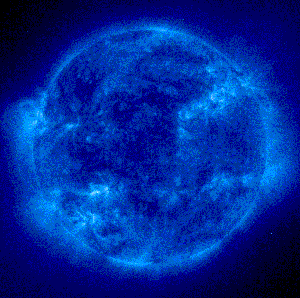
Physical Science Lesson for Grades 5-12
by
Bob Coutts

 |
|||
|
|
|
|
|
As a SOLAR ASTRONOMER, you will use Internet resources to acquire beautiful solar pictures , obtain useful solar data and work with professional astronomers from all over he world. Travel virtually in the world of magnetic storms, sun spots, flares, solar quakes, faculae , and solar charged particles and their effect on the earth's upper atmosphere . Find out how charged high energy particles from the sun can shut down Earth's satellites and the services they provide us, as well as the sun's effect on space weather. Be part of a national solar study program called Live From The Sun , in which students from all over the world are learning how to study the SUN. Find out for yourself using daily pictures of the sun from solar and earth orbiting satellites , how long it takes for the sun to rotate on it's own axis. Use image processing to capture your own pictures of live surface features and use pictures of these features to track their lives from birth to death. Using the activities in this unit, you will be able to track the life and death of your own individual sunspot! When you visit all the SOLAR SITES on the Net today, you will have more information than most professional solar astronomers had just a few years ago. Welcome to the world of SOLAR ASTRONOMY!

Home Page |
Activity Page |
Team Page |
Resources |
Show Your Stuff |
Teachers |
How did you do? |